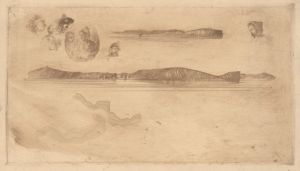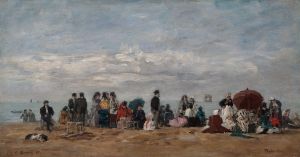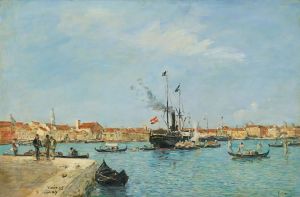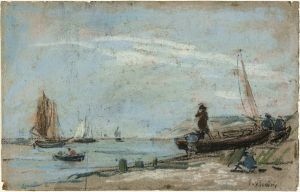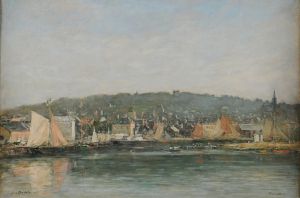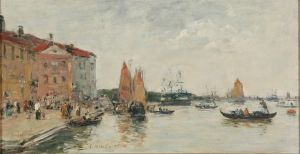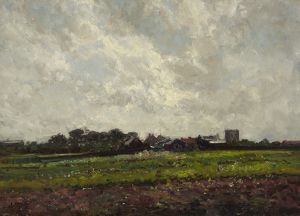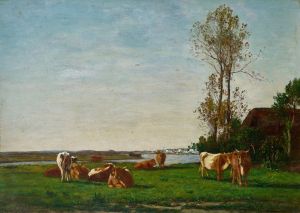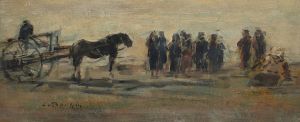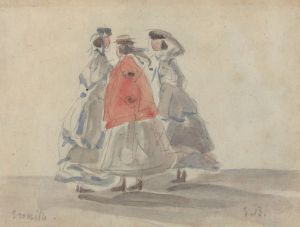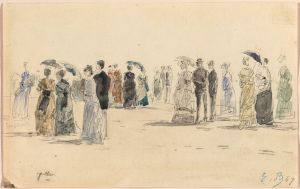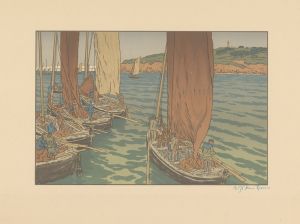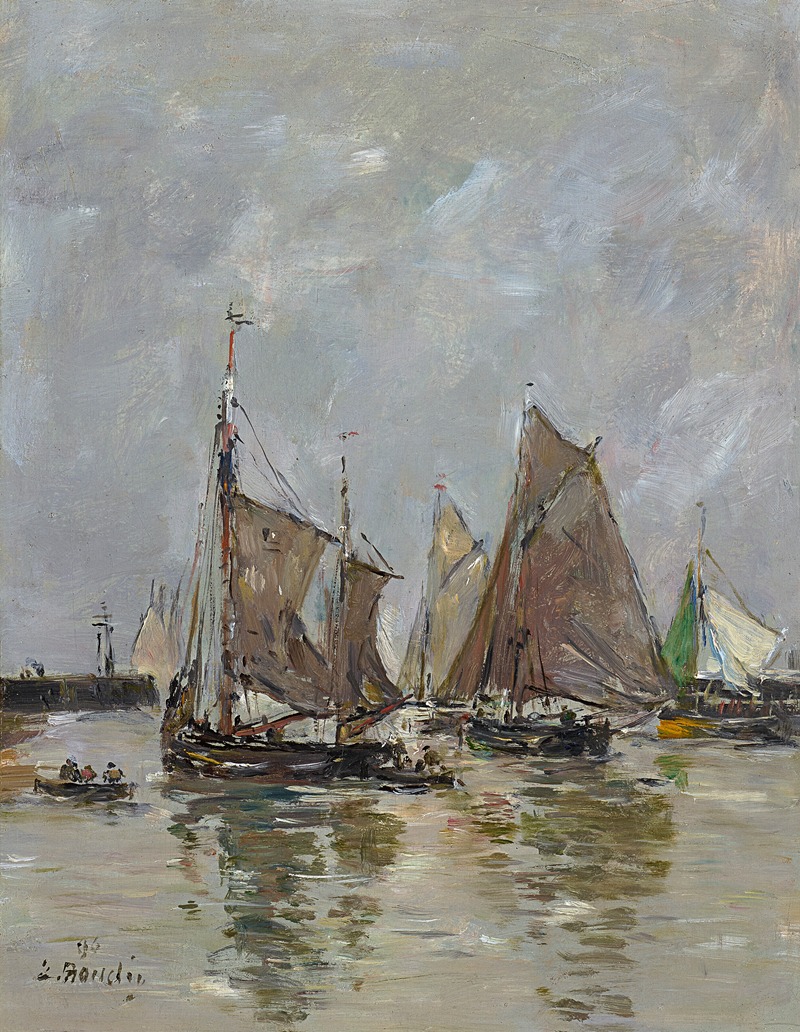
Trouville, l’appareillage des sardiniers
A hand-painted replica of Eugène Boudin’s masterpiece Trouville, l’appareillage des sardiniers, meticulously crafted by professional artists to capture the true essence of the original. Each piece is created with museum-quality canvas and rare mineral pigments, carefully painted by experienced artists with delicate brushstrokes and rich, layered colors to perfectly recreate the texture of the original artwork. Unlike machine-printed reproductions, this hand-painted version brings the painting to life, infused with the artist’s emotions and skill in every stroke. Whether for personal collection or home decoration, it instantly elevates the artistic atmosphere of any space.
Eugène Boudin's painting Trouville, l’appareillage des sardiniers (translated as Trouville, the Departure of the Sardine Boats) is a work by the French artist who is widely regarded as one of the precursors of Impressionism. Boudin, born in 1824 in Honfleur, Normandy, was known for his depictions of coastal scenes, particularly those of Normandy and Brittany. His works often captured the interplay of light, water, and sky, reflecting his fascination with maritime life and the natural environment.
This particular painting depicts the bustling harbor of Trouville-sur-Mer, a seaside town in Normandy that was a frequent subject in Boudin's oeuvre. Trouville was a popular destination for tourists and artists during the 19th century, and its vibrant fishing industry provided a rich source of inspiration for Boudin. In Trouville, l’appareillage des sardiniers, Boudin portrays the departure of sardine fishing boats, a scene that reflects the daily life and economic activity of the region at the time.
The painting is characteristic of Boudin's style, with its loose brushwork and attention to atmospheric effects. The composition likely includes elements such as fishing boats, sailors, and the harbor, set against a backdrop of sky and sea. Boudin's ability to capture the fleeting effects of light and weather is evident in this work, as in many of his other paintings. His focus on outdoor scenes and natural light would later influence the Impressionist movement, particularly artists like Claude Monet, who admired and learned from Boudin.
The exact date of creation for Trouville, l’appareillage des sardiniers is not specified in available records, but it is consistent with Boudin's broader body of work from the mid-to-late 19th century. During this period, Boudin frequently painted scenes of Trouville and other coastal towns, documenting the maritime culture and landscapes of northern France.
The painting is part of Boudin's extensive legacy, which includes numerous works housed in museums and private collections around the world. His contributions to art history are significant, as he bridged the gap between the Barbizon School and the Impressionist movement, emphasizing the importance of painting en plein air (outdoors) and capturing the transient beauty of nature.
Further details about the current location or ownership of Trouville, l’appareillage des sardiniers are not readily available in public records.






